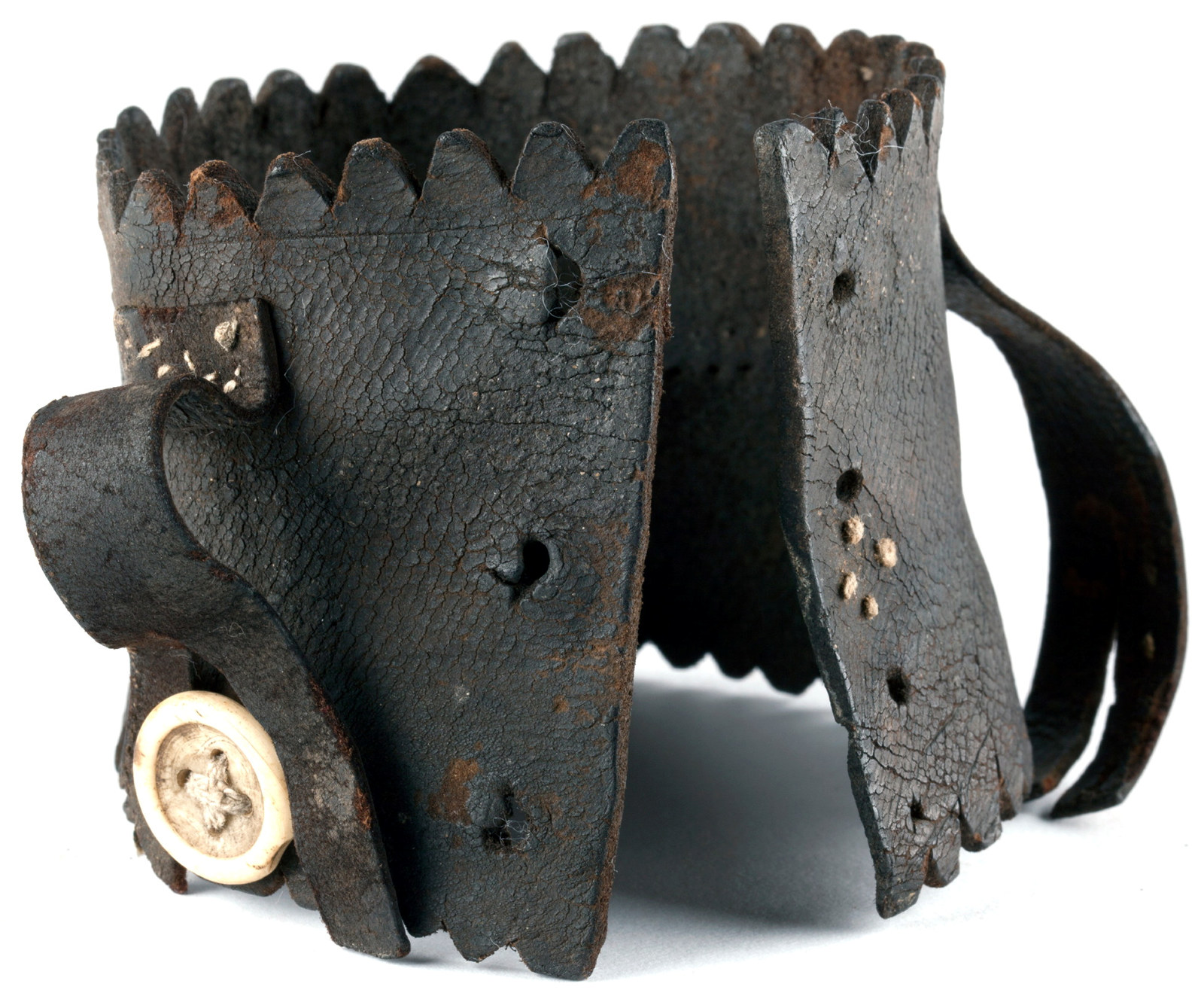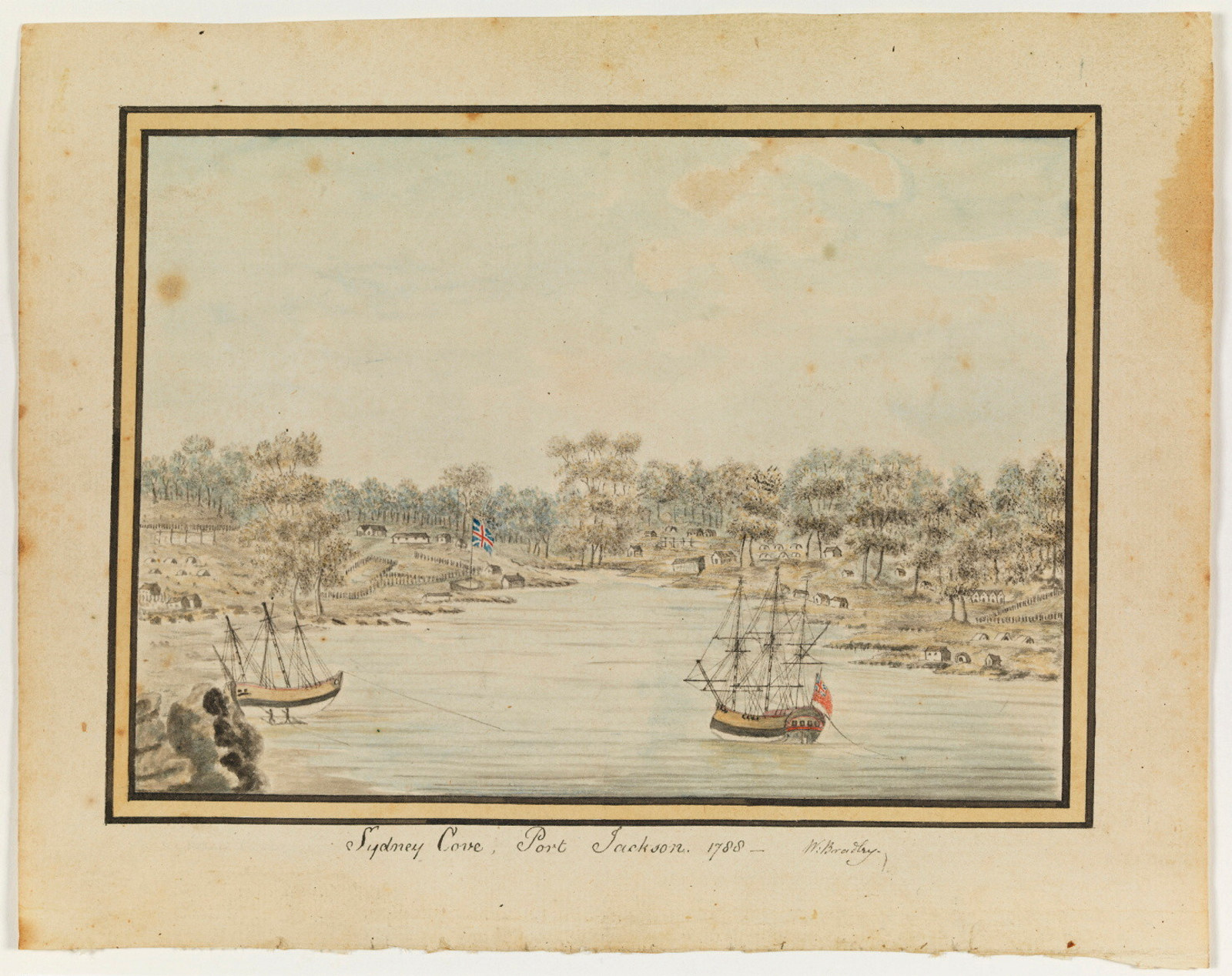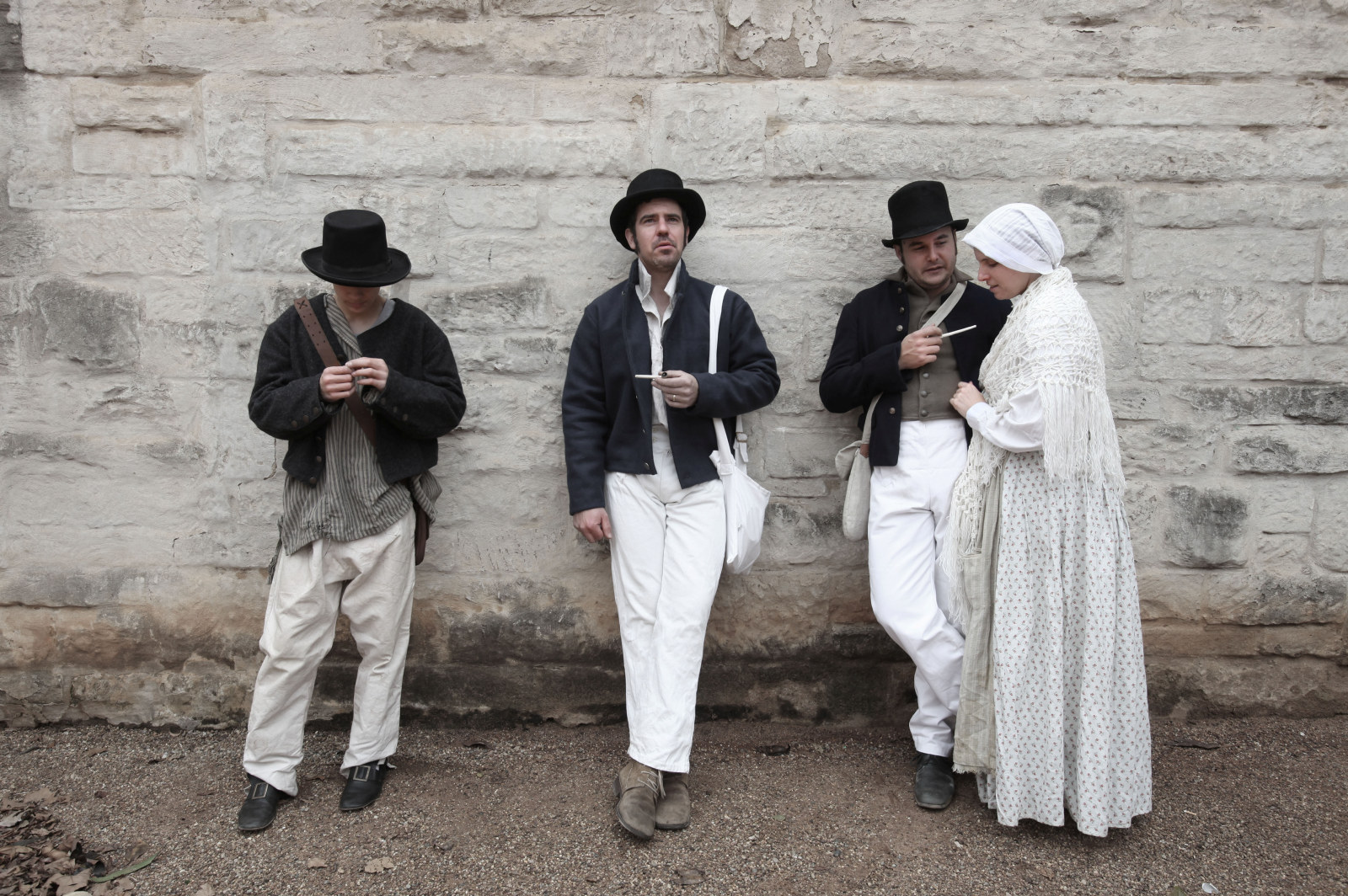Stone-cutting
Rough blocks of Sydney sandstone were first quarried from The Rocks by stone-cutting gangs. Then stonemasons refined and shaped them as needed, into large blocks for stone walls or into finely carved architectural features. The masons struck their steel chisels with a wooden mallet that absorbed the percussion of the blow, which would otherwise be transferred to the surface of the stone. Blacksmiths worked on site alongside stonemasons, continually sharpening the tools.
Skilled stonemason Edward Cureton, who crafted the obelisk in Macquarie Place, trained 50 new convict masons in two years. Francis Greenway, who came from a family of quarrymen, builders and masons, used the construction of Macquarie Lighthouse as a training school for convict masons. Later trainees honed their skills on the walls of Sydney’s new jail at Darlinghurst. Each man had to cut a certain number of stones, and individual convict markings can still be seen along Darlinghurst Road.
I landed with a good character, and, being a strong and willing hand to work, was sent to the ‘stone quarries’ to toil, being guarded to work, all day the same …
Convict Jack Bushman remembering 1818, Passages from the life of a lifer, 1859
This content was compiled for the Convict Sydney website from existing information such as SLM exhibition text and other researched material © Sydney Living Museums, 2017.
Published on
Convicts

Convict Sydney
Leg Iron Guard
A stunning example of an improvised handicraft, this leather ankle guard or ‘gaiter’ was made to protect a convict’s ankle from leg irons

Why were convicts transported to Australia?
Until 1782, English convicts were transported to America, however that all changed after 1783

Convict Sydney
1844 - Day in the life of a convict
Fraying at the edges, these were the Barracks’ darkest days with only the worst convicts remaining

Convict Sydney
1801 - Day in the life of a convict
In the young colony, there was no prisoner’s barrack - the bush and sea were the walls of the convicts’ prison